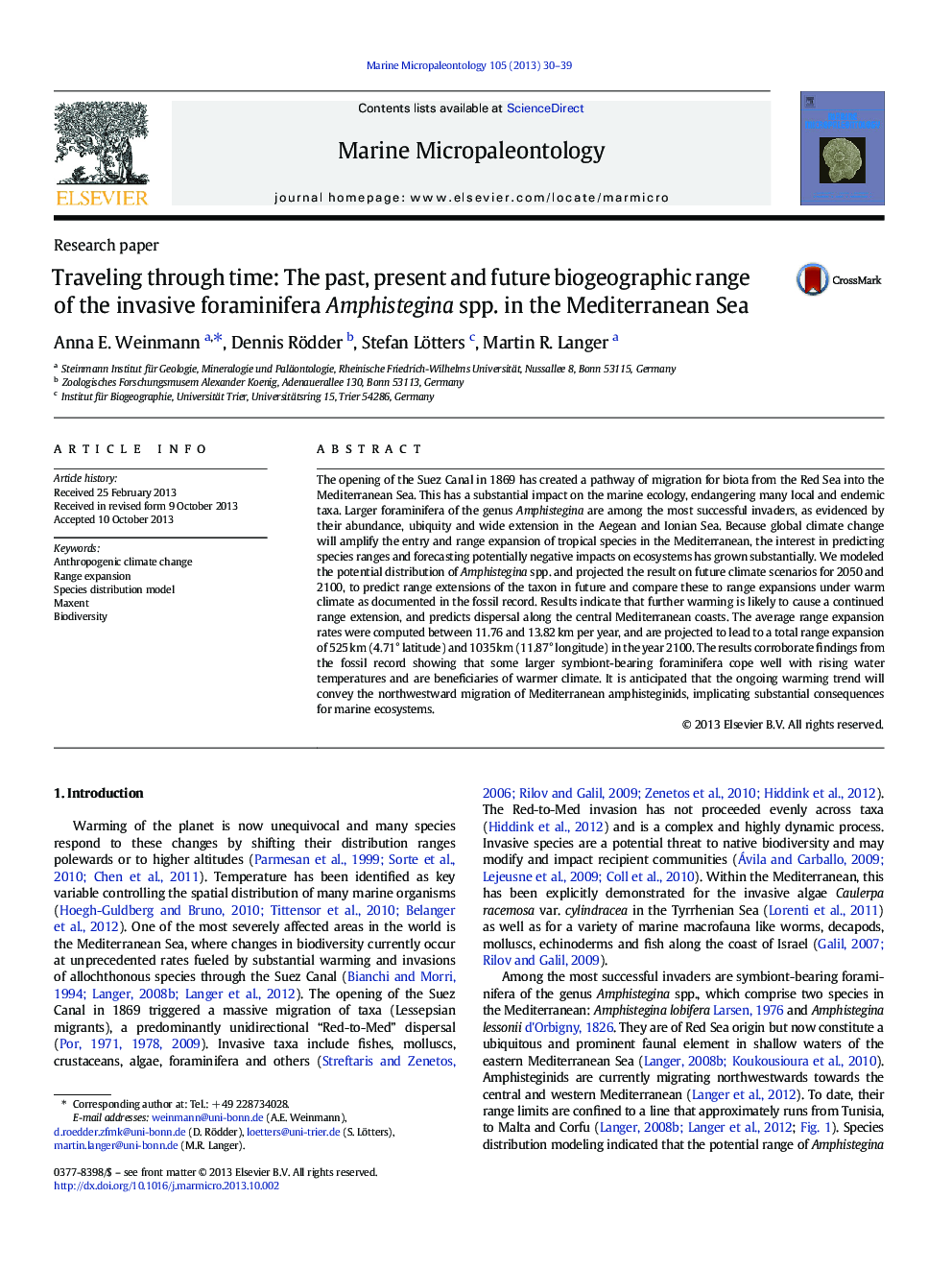| کد مقاله | کد نشریه | سال انتشار | مقاله انگلیسی | نسخه تمام متن |
|---|---|---|---|---|
| 4748909 | 1642180 | 2013 | 10 صفحه PDF | دانلود رایگان |

• We model the future distribution of Amphistegina spp. in the Mediterranean Sea.
• Climate change promotes a projected range expansion of 1035 km in the year 2100.
• Projecting future distributions aims to assess changes in Mediterranean ecosystems.
• Modeled expansion rates are in concordance with the fossil record.
• Future range extensions may cause impacts on ecosystem functioning.
The opening of the Suez Canal in 1869 has created a pathway of migration for biota from the Red Sea into the Mediterranean Sea. This has a substantial impact on the marine ecology, endangering many local and endemic taxa. Larger foraminifera of the genus Amphistegina are among the most successful invaders, as evidenced by their abundance, ubiquity and wide extension in the Aegean and Ionian Sea. Because global climate change will amplify the entry and range expansion of tropical species in the Mediterranean, the interest in predicting species ranges and forecasting potentially negative impacts on ecosystems has grown substantially. We modeled the potential distribution of Amphistegina spp. and projected the result on future climate scenarios for 2050 and 2100, to predict range extensions of the taxon in future and compare these to range expansions under warm climate as documented in the fossil record. Results indicate that further warming is likely to cause a continued range extension, and predicts dispersal along the central Mediterranean coasts. The average range expansion rates were computed between 11.76 and 13.82 km per year, and are projected to lead to a total range expansion of 525 km (4.71° latitude) and 1035 km (11.87° longitude) in the year 2100. The results corroborate findings from the fossil record showing that some larger symbiont-bearing foraminifera cope well with rising water temperatures and are beneficiaries of warmer climate. It is anticipated that the ongoing warming trend will convey the northwestward migration of Mediterranean amphisteginids, implicating substantial consequences for marine ecosystems.
Journal: Marine Micropaleontology - Volume 105, December 2013, Pages 30–39